Detector of authenticity of excise stamps and securities
There was a case with me, about 8 years ago. I paid the customer for the order and gave me the money right in the store from the cash register. The notes were large and looked absolutely no different from others, but when I tried to pay them for a loan at a bank, a problem arose. One of the bills was fake. In general, this procedure is unpleasant.
They called the investigators, who asked questions for a long time and psychologically probed if I was not specifically trying to sell these bills. It all ended relatively well, but I was left without money. Here the victim is not insured at all, moreover, the law clearly interprets such moments - since you have fake money, you are automatically guilty. And then how it will turn out either you will get off with just a conversation, or you will be detained in the flesh until the search of the apartment, there is not enough pleasant. Well, who got burned with milk, blowing even water. At that time I purchased an ultraviolet flashlight and more carefully check all the notes that fall into my hands. But almost a decade has passed, the technologies did not stand still, and a compact detector of excise stamps and banknotes is replacing UV flashlights and bulky professional detectors.

Let's take a look inside the box.
')
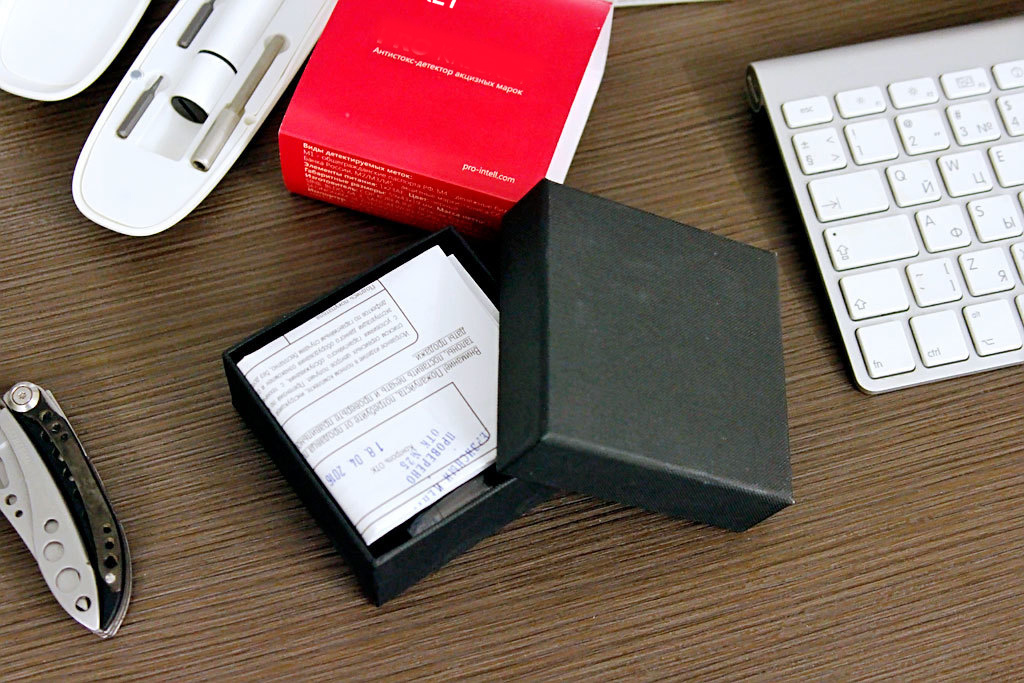
By itself, the box is already small, no more than 7-8cm in height and width.
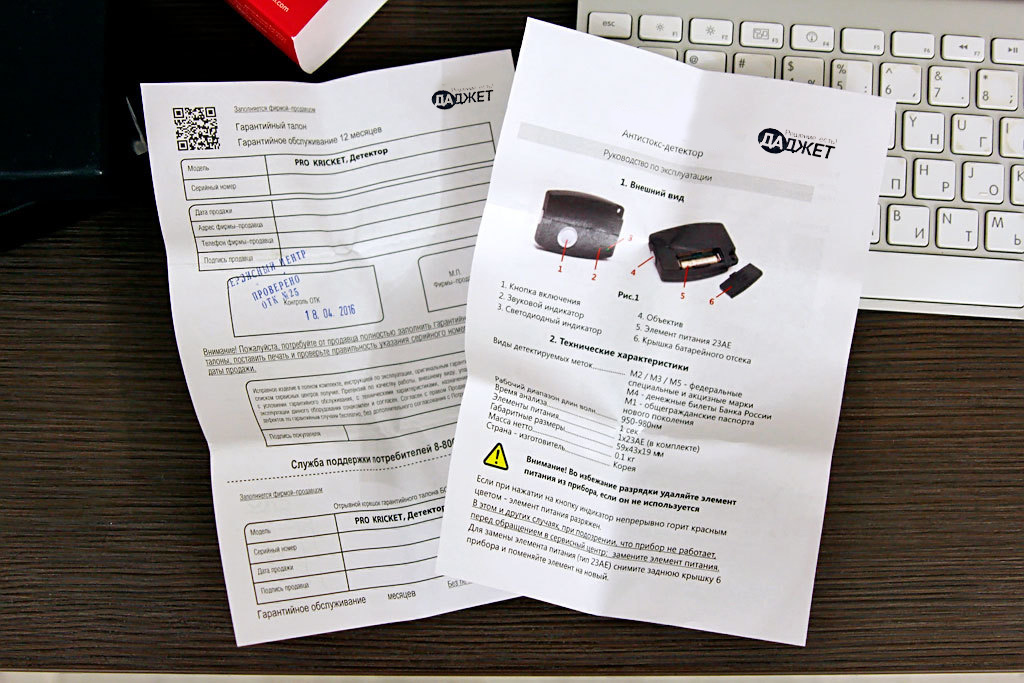
Inside is a small instruction, warranty card ...
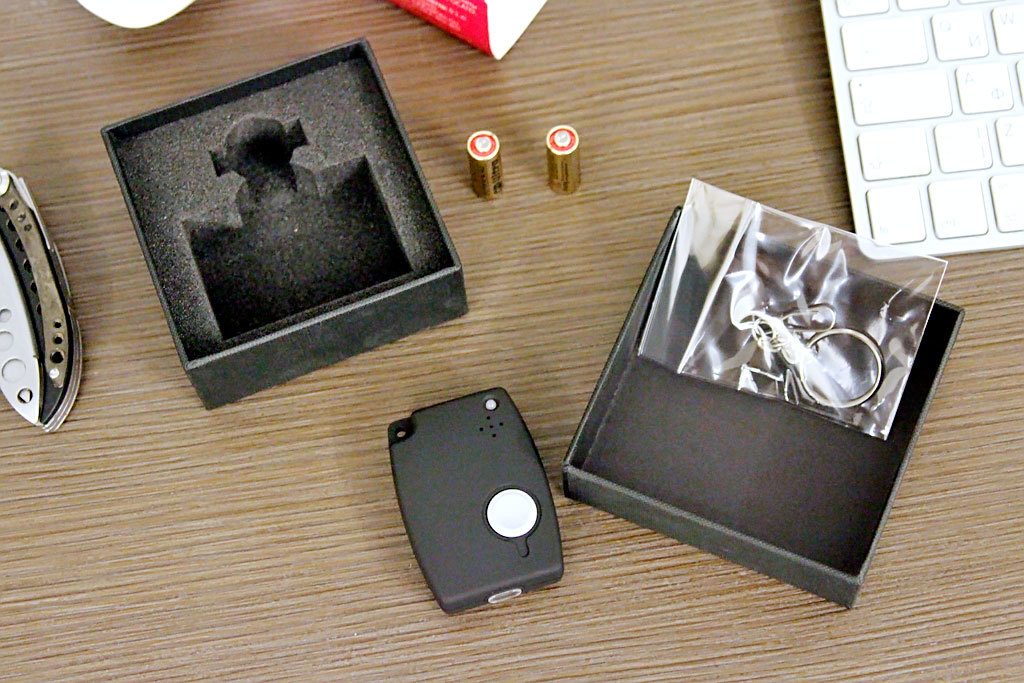
A ring with a mini-carabiner on a chain, a pair of batteries and the device itself.

The detector uses a single battery size 23AE, the same is often used in key chains from car alarms. One battery at 12 volts.
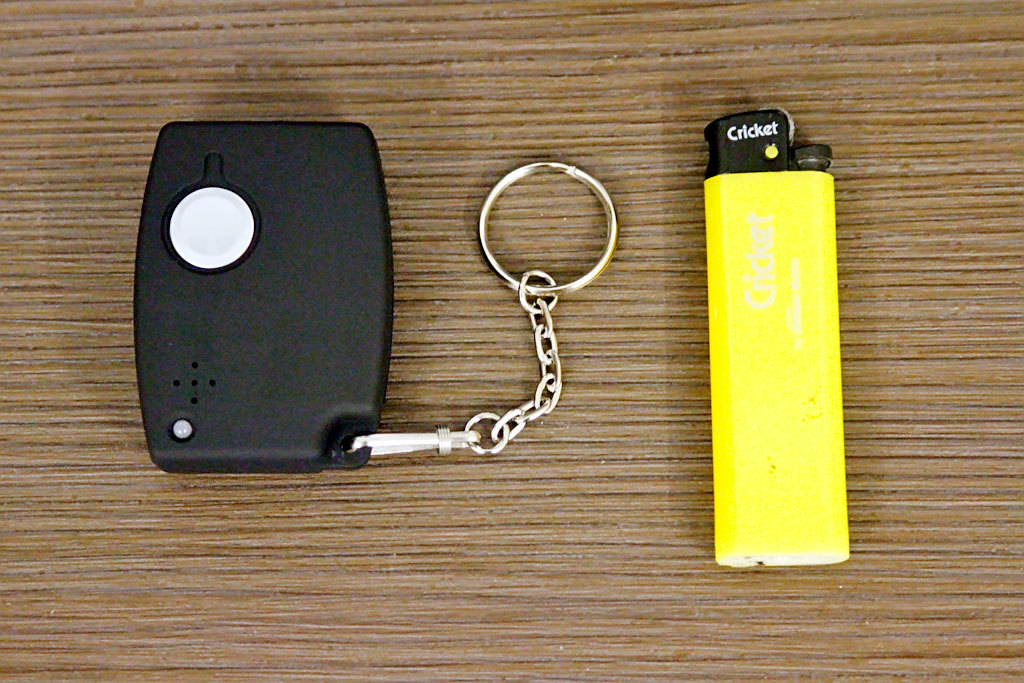
The device is quite compact, here it is next to a regular cigarette lighter.
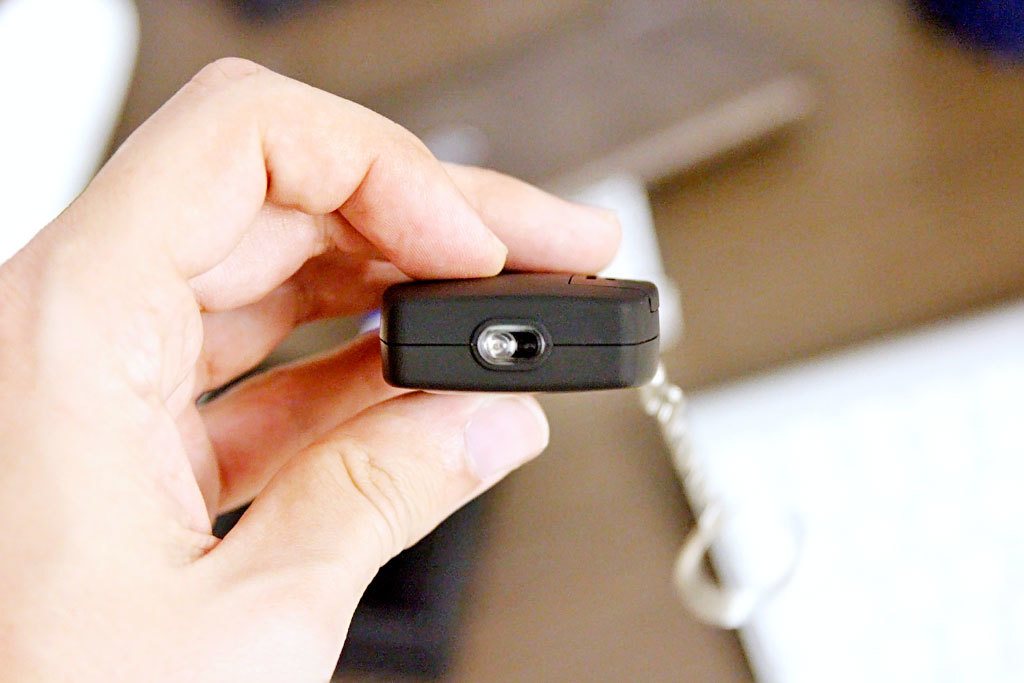
From the front end, the device has a window through which the detection of the labels “Anti-Stokes” or “Special Elements I” occurs.
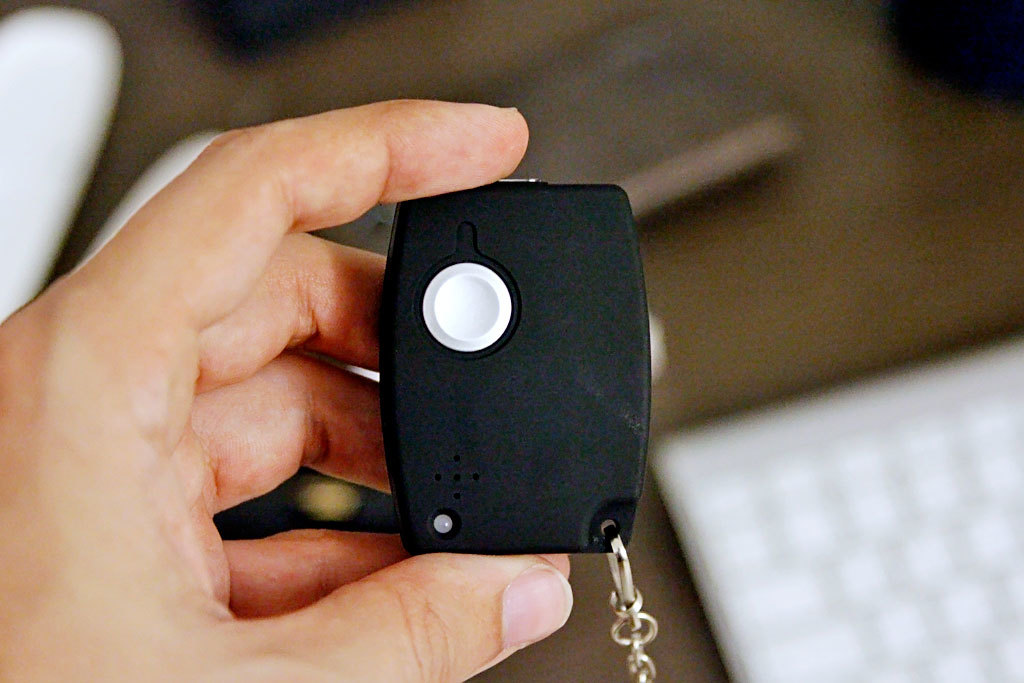
The main control element of the detector is a button. She is the only one here.
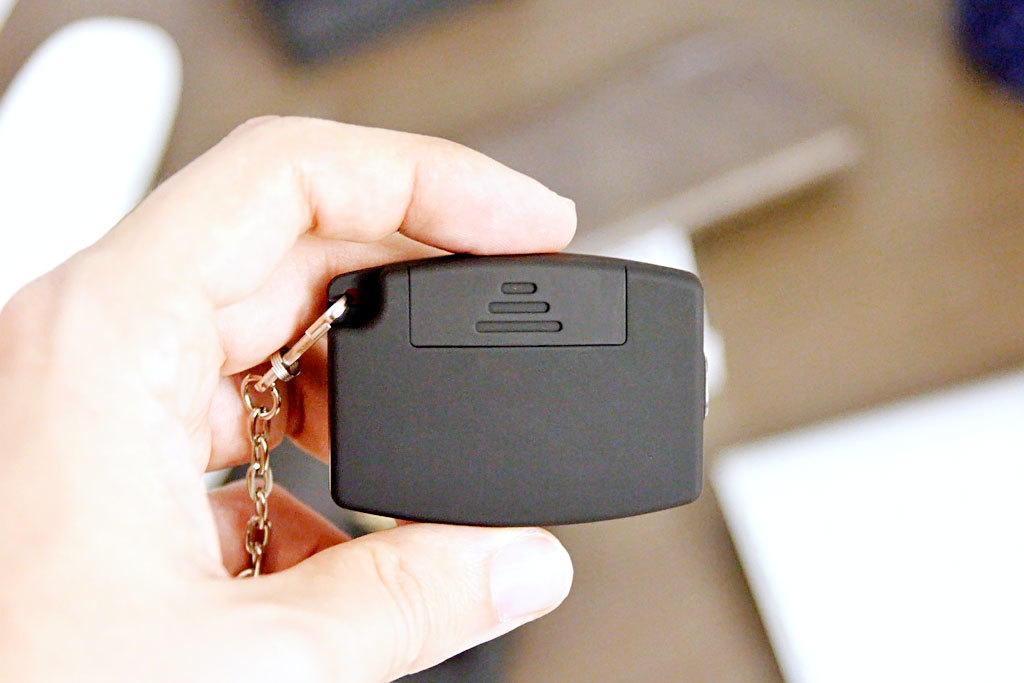
On the reverse side there is a battery cover. Behind the mini-eyebolt in order to hook the detector to the keys on the ring.
It's very simple, I think even the instruction is not needed to figure out how it works. And it works confidently and without failures.
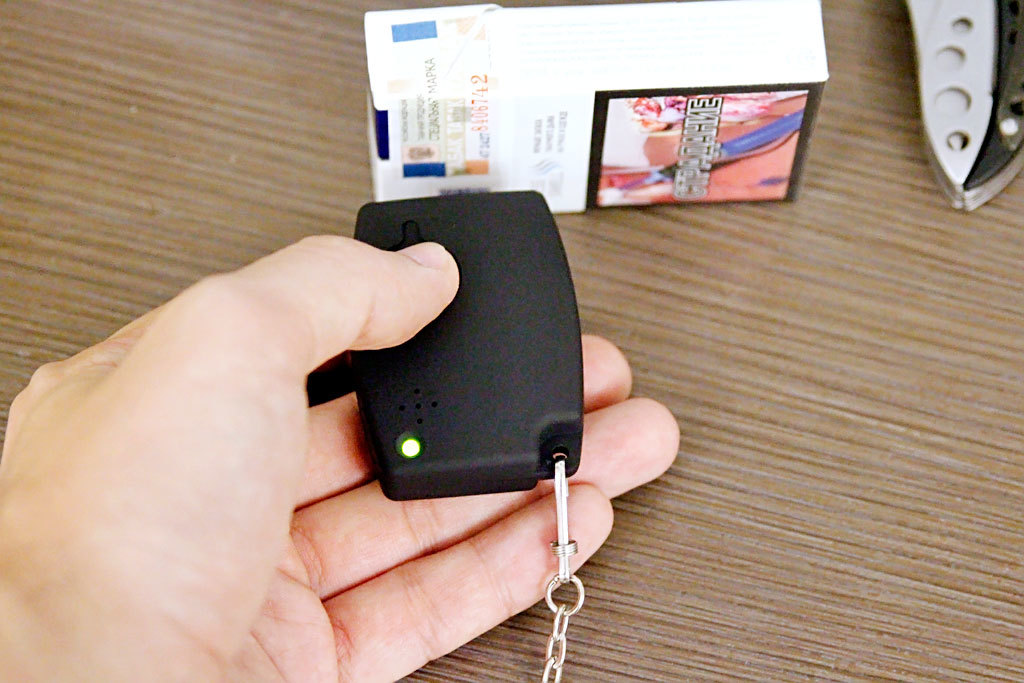
We bring the detector to the excise stamp and press the button. If the green LED lights up and a signal is heard, then everything is ok. If the detector is silent and flashes red when the button is pressed and released, then the “Anti-Stokes” tags are not detected.
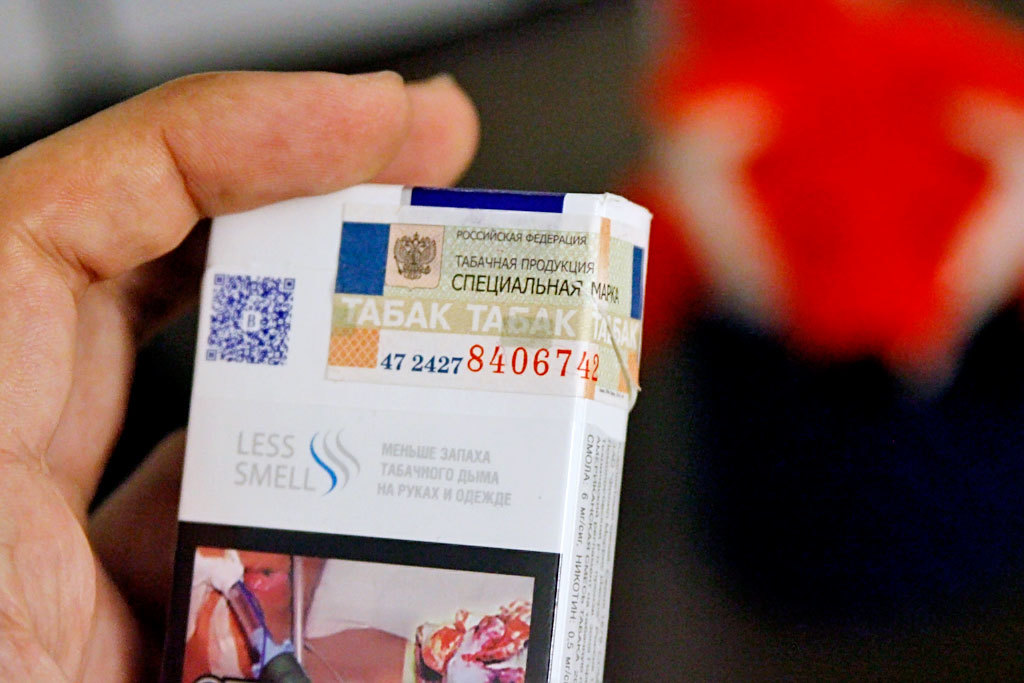
Now it is a little more detailed about the technology of “Special element I” or “Anti-Lockbox”.
Specially designed paint with anti-Stokes phosphors, which under the influence of focused laser radiation with a wavelength of 940-960 nm causes a fluorescent glow, called the effect of "Antistoks".
Since the effect of the glow of paint under the influence of radiation has a wavelength visible to the human eye, this type of detection is used in viewing detectors to check banknotes and securities. The check for this attribute is called the detection of the special element “AND”.
The security feature "Antistoks" is the only official machine-readable security feature that counterfeiters haven’t been able to simulate. Thus, the use of this mode is 100% guaranteed to detect counterfeit banknotes.
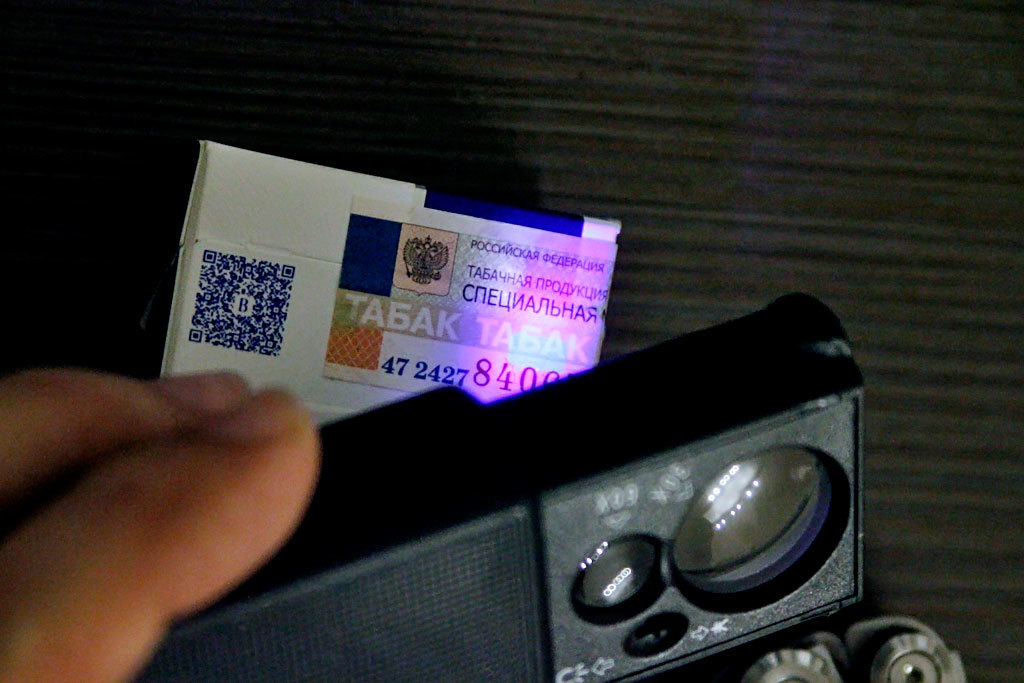
As a matter of fact, my UV flashlight doesn’t highlight these marks, which is understandable. Special coherent radiation is needed. The only way to determine authenticity with UV is luminous fibers.
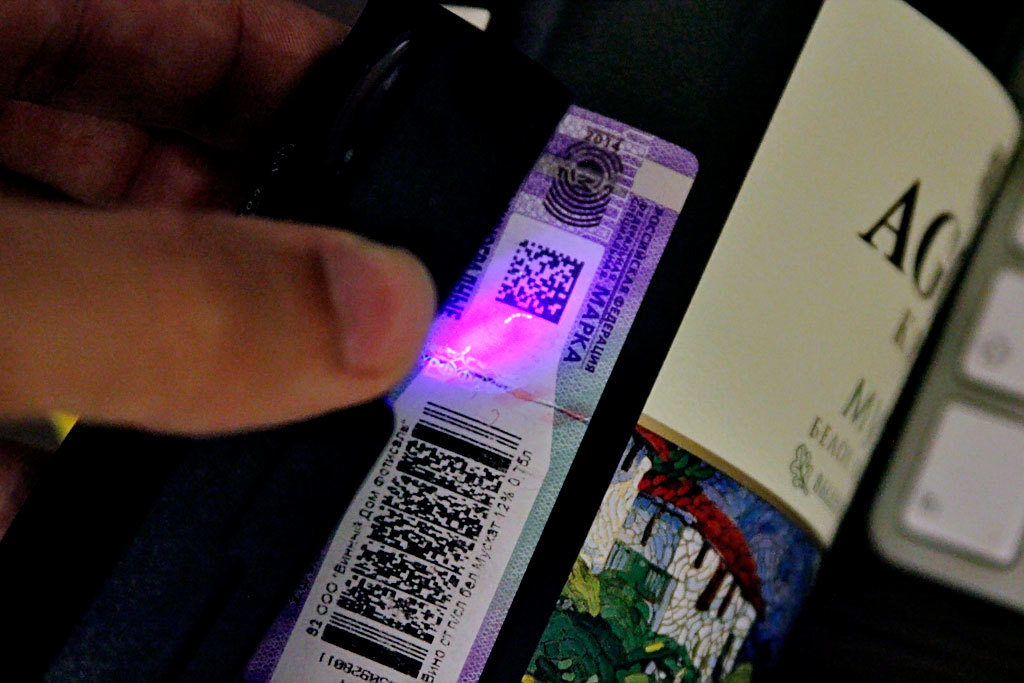
Here, for example, the excise stamp on a bottle of wine:
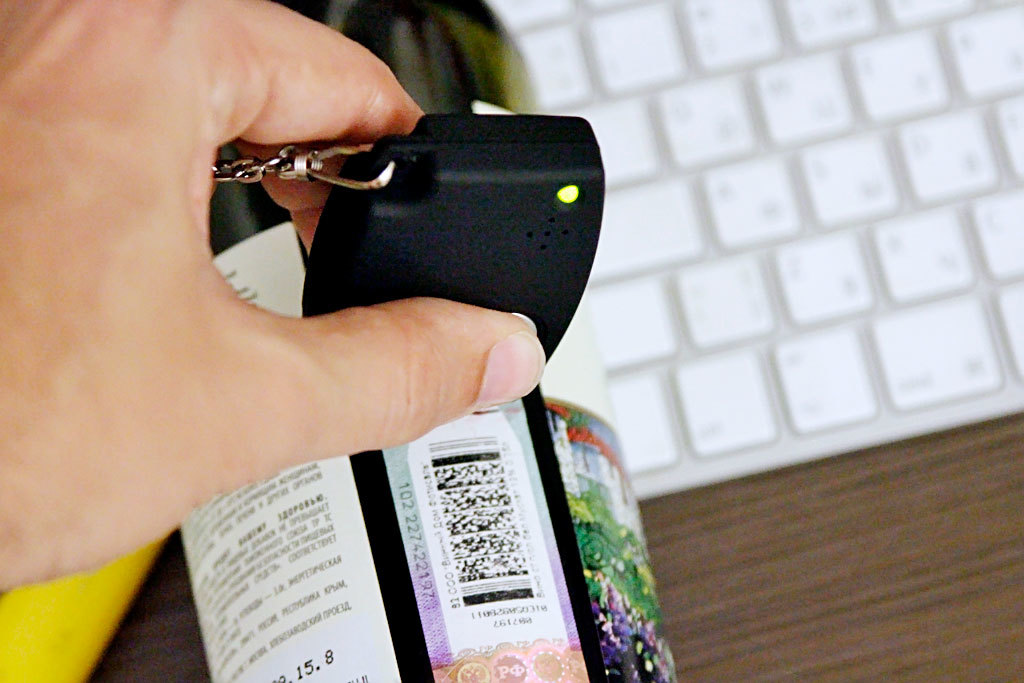
Check passed.
On the excise stamp, anti-Stokes are scattered somehow in interesting places from a certain distance, the entire excise stamp is detected in green. Maybe this is a mistake? Check on a simple label.
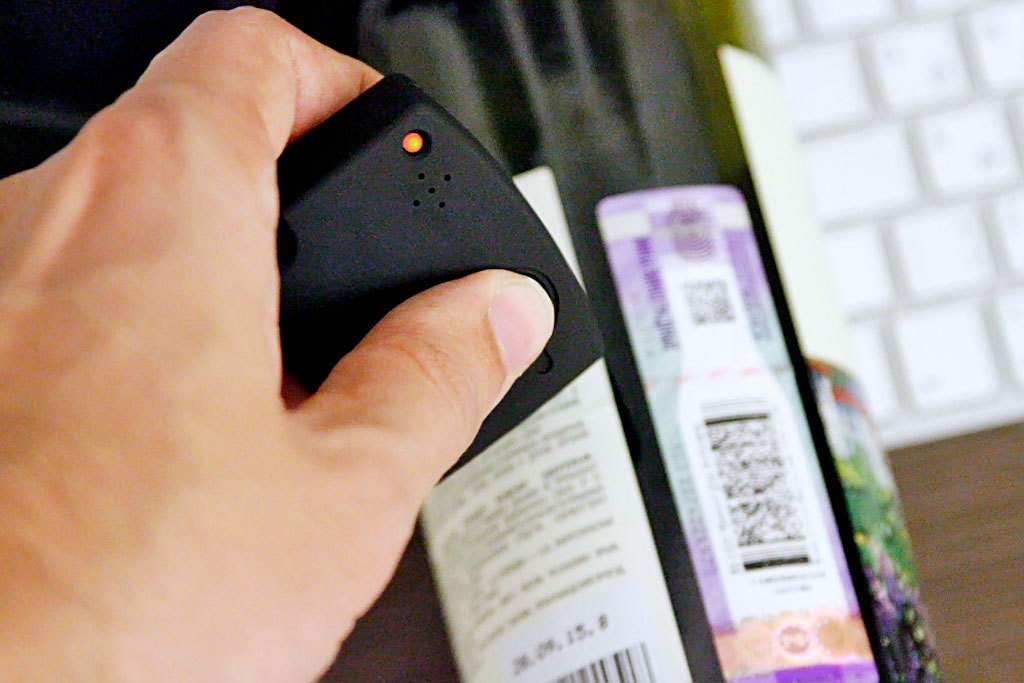
No, it is stably red here. As I did not complain and did not attach, there were no failures.
Go to the bills.
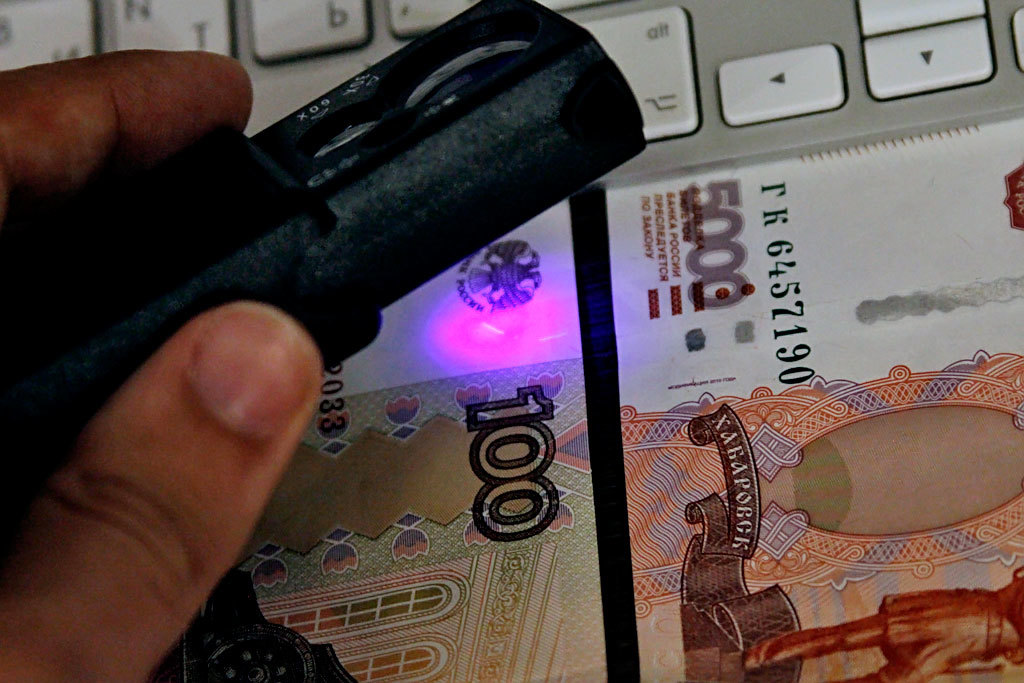
In the ultraviolet fiber glow. But the label "Antistoks" anymore.

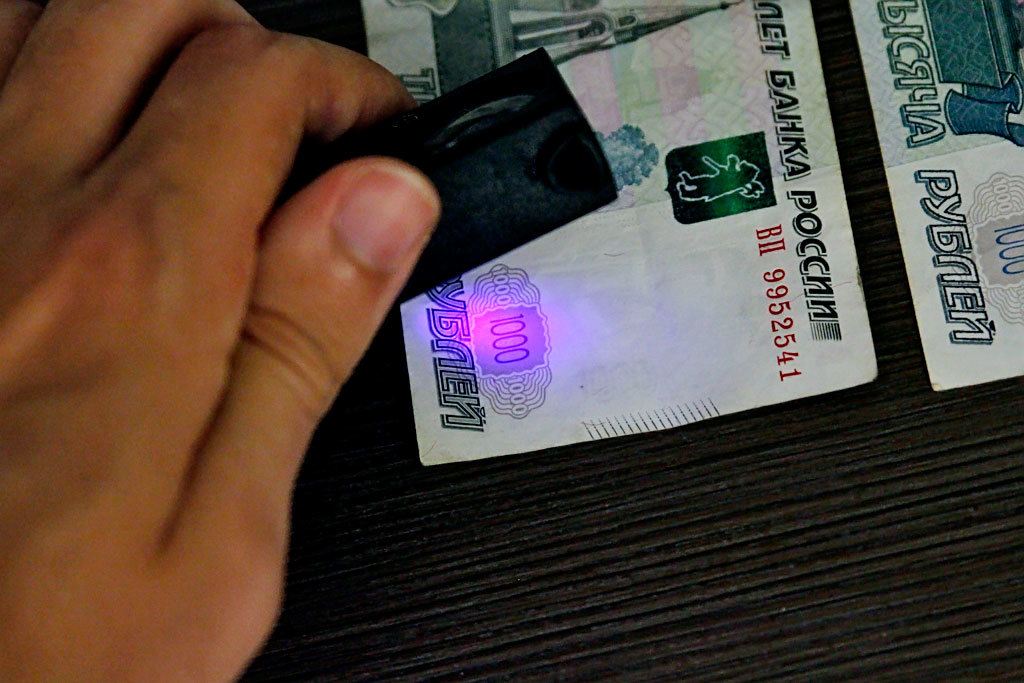
We check them with a detector.
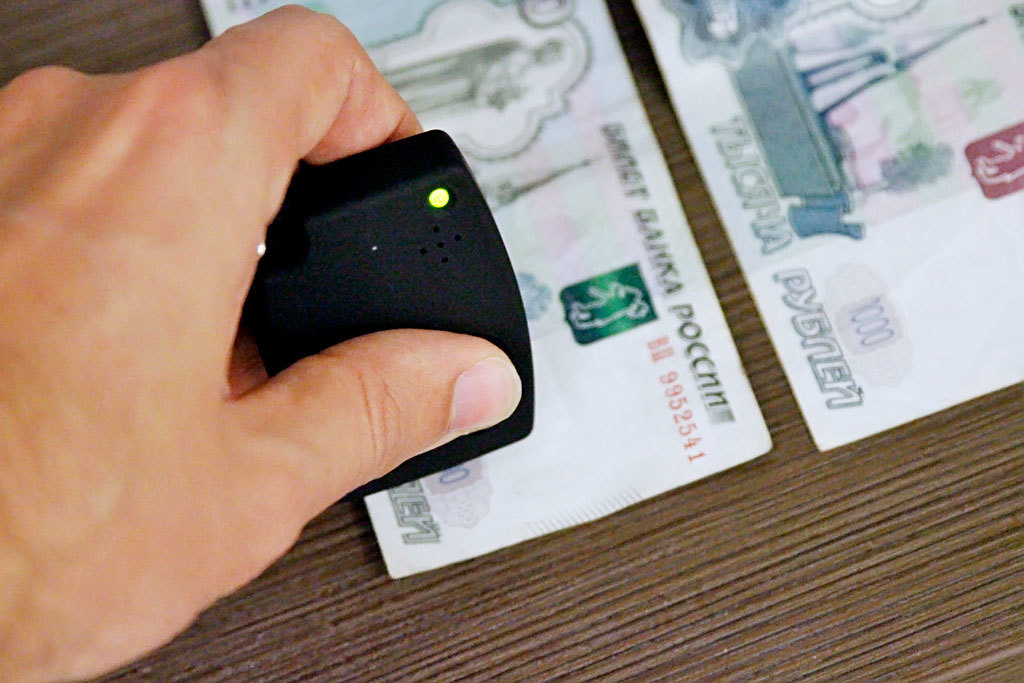
All perfectly.

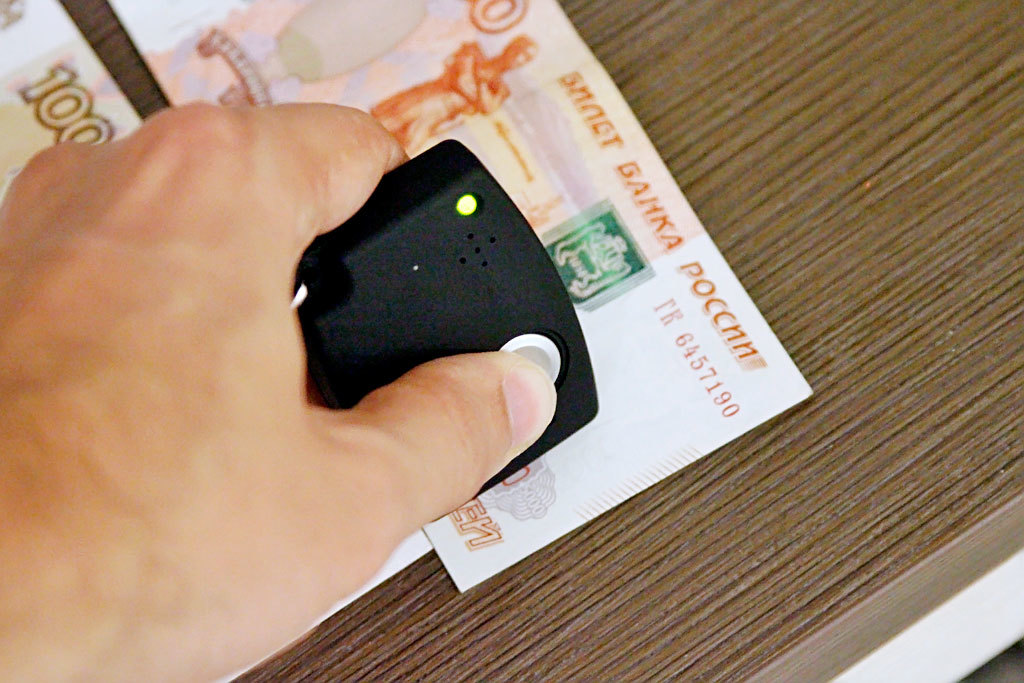
Both small bills and large ones are also tested.
The detector perfectly checks all securities for the presence of “Special Element I”, and thanks to its compact dimensions it easily fits in your pocket or even on keys. The only moment that confuses me here is the well-known Soft-touch coverage, I will explain why. Over time, it is erased. Especially on the protruding parts, as a result, rather quickly, any gadget covered with this miracle coating begins to look worse than it would have been made of simple plastic. In this case, the detector has angular shapes and at the corners the coating will be erased fairly quickly. Of course, this does not affect the functionality in any way, but aesthetically it will not look so good. Let's see how long it will last.
I completely forgot to look inside. Let's disassemble this black box, the more there is not a single screw, all snap.
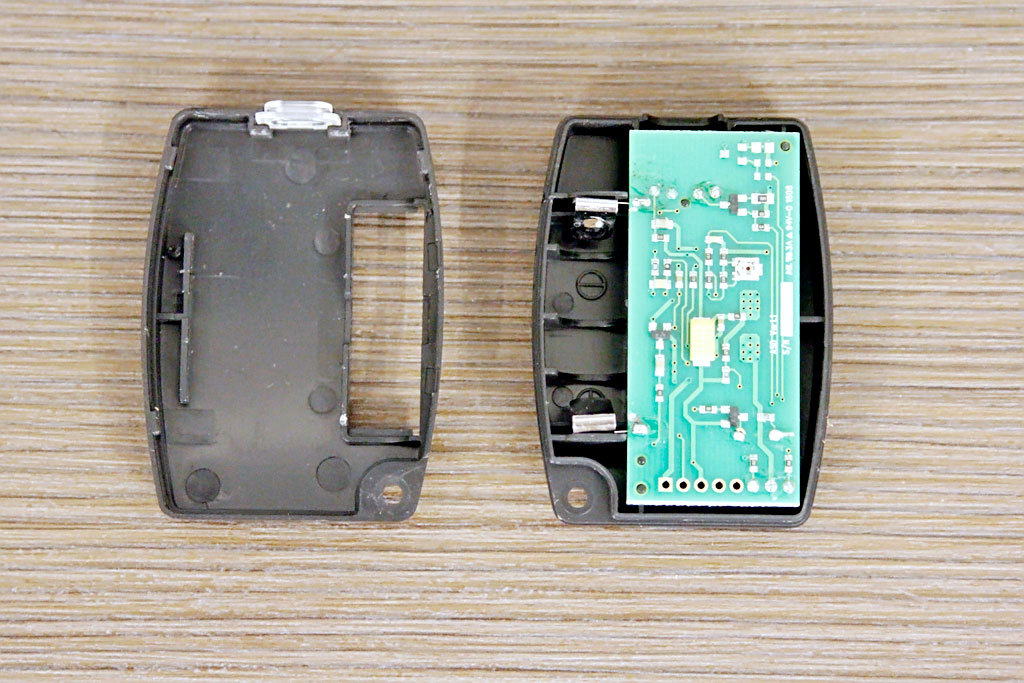
We hook on the edge of the plastic and divide the body into two halves.
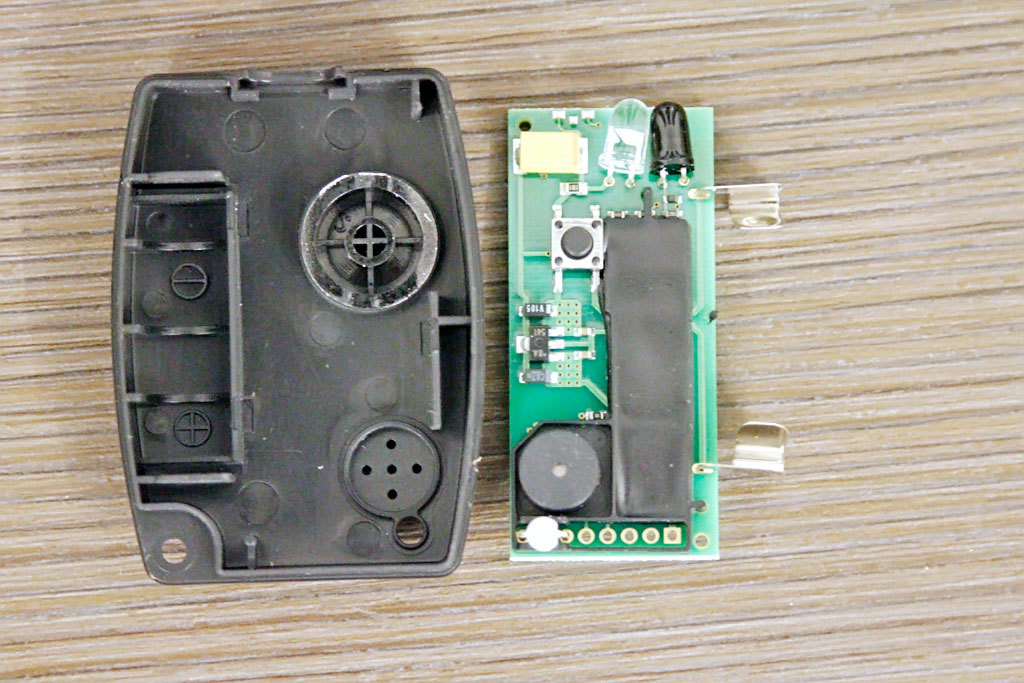
All the interesting electronics is hidden in a plastic casing and filled with a hard compound, which is so easy to find out for ICs, which is a pity.
Well, by tradition, I remind you that you can purchase an authenticity detector within 14 days with a 10% discount on the promotional code: GEEKT-DPD. And you can do it here HERE .
The company "Dadzhet" is interested in publishing independent objective reviews of dadzhetov in various kinds of media. The company “Djadzhet” will gladly provide dadzhetov bloggers and authors who want to test them and write a review. The device after writing a review remains with the author. The company is not trying to tell the author what to write about our product, but asks to show the article before publication. In this case, it is possible to clarify information and prevent errors. Whether to consider company comments or not is always up to the discretion of the author. Read more ..
They called the investigators, who asked questions for a long time and psychologically probed if I was not specifically trying to sell these bills. It all ended relatively well, but I was left without money. Here the victim is not insured at all, moreover, the law clearly interprets such moments - since you have fake money, you are automatically guilty. And then how it will turn out either you will get off with just a conversation, or you will be detained in the flesh until the search of the apartment, there is not enough pleasant. Well, who got burned with milk, blowing even water. At that time I purchased an ultraviolet flashlight and more carefully check all the notes that fall into my hands. But almost a decade has passed, the technologies did not stand still, and a compact detector of excise stamps and banknotes is replacing UV flashlights and bulky professional detectors.

Packaging and what's inside?
Let's take a look inside the box.
')

By itself, the box is already small, no more than 7-8cm in height and width.

Inside is a small instruction, warranty card ...

A ring with a mini-carabiner on a chain, a pair of batteries and the device itself.

The detector uses a single battery size 23AE, the same is often used in key chains from car alarms. One battery at 12 volts.

The device is quite compact, here it is next to a regular cigarette lighter.

From the front end, the device has a window through which the detection of the labels “Anti-Stokes” or “Special Elements I” occurs.

The main control element of the detector is a button. She is the only one here.

On the reverse side there is a battery cover. Behind the mini-eyebolt in order to hook the detector to the keys on the ring.
It's very simple, I think even the instruction is not needed to figure out how it works. And it works confidently and without failures.

We bring the detector to the excise stamp and press the button. If the green LED lights up and a signal is heard, then everything is ok. If the detector is silent and flashes red when the button is pressed and released, then the “Anti-Stokes” tags are not detected.

Now it is a little more detailed about the technology of “Special element I” or “Anti-Lockbox”.
How it works?
Specially designed paint with anti-Stokes phosphors, which under the influence of focused laser radiation with a wavelength of 940-960 nm causes a fluorescent glow, called the effect of "Antistoks".
Since the effect of the glow of paint under the influence of radiation has a wavelength visible to the human eye, this type of detection is used in viewing detectors to check banknotes and securities. The check for this attribute is called the detection of the special element “AND”.
The security feature "Antistoks" is the only official machine-readable security feature that counterfeiters haven’t been able to simulate. Thus, the use of this mode is 100% guaranteed to detect counterfeit banknotes.

As a matter of fact, my UV flashlight doesn’t highlight these marks, which is understandable. Special coherent radiation is needed. The only way to determine authenticity with UV is luminous fibers.

Here, for example, the excise stamp on a bottle of wine:

Check passed.
On the excise stamp, anti-Stokes are scattered somehow in interesting places from a certain distance, the entire excise stamp is detected in green. Maybe this is a mistake? Check on a simple label.

No, it is stably red here. As I did not complain and did not attach, there were no failures.
Go to the bills.

In the ultraviolet fiber glow. But the label "Antistoks" anymore.


We check them with a detector.

All perfectly.


Both small bills and large ones are also tested.
The detector perfectly checks all securities for the presence of “Special Element I”, and thanks to its compact dimensions it easily fits in your pocket or even on keys. The only moment that confuses me here is the well-known Soft-touch coverage, I will explain why. Over time, it is erased. Especially on the protruding parts, as a result, rather quickly, any gadget covered with this miracle coating begins to look worse than it would have been made of simple plastic. In this case, the detector has angular shapes and at the corners the coating will be erased fairly quickly. Of course, this does not affect the functionality in any way, but aesthetically it will not look so good. Let's see how long it will last.
I completely forgot to look inside. Let's disassemble this black box, the more there is not a single screw, all snap.

We hook on the edge of the plastic and divide the body into two halves.

All the interesting electronics is hidden in a plastic casing and filled with a hard compound, which is so easy to find out for ICs, which is a pity.
Well, by tradition, I remind you that you can purchase an authenticity detector within 14 days with a 10% discount on the promotional code: GEEKT-DPD. And you can do it here HERE .
The company "Dadzhet" is interested in publishing independent objective reviews of dadzhetov in various kinds of media. The company “Djadzhet” will gladly provide dadzhetov bloggers and authors who want to test them and write a review. The device after writing a review remains with the author. The company is not trying to tell the author what to write about our product, but asks to show the article before publication. In this case, it is possible to clarify information and prevent errors. Whether to consider company comments or not is always up to the discretion of the author. Read more ..
Source: https://habr.com/ru/post/397821/
All Articles